Craving some delicious shrimp chow mein but don’t want to order takeout? This recipe is perfect for a quick, homemade alternative that tastes just as good (if not better) than the restaurant version! It’s loaded with juicy shrimp, crisp veggies, and chewy noodles tossed in a savory sauce that’s easy to whip up in under 30 minutes.
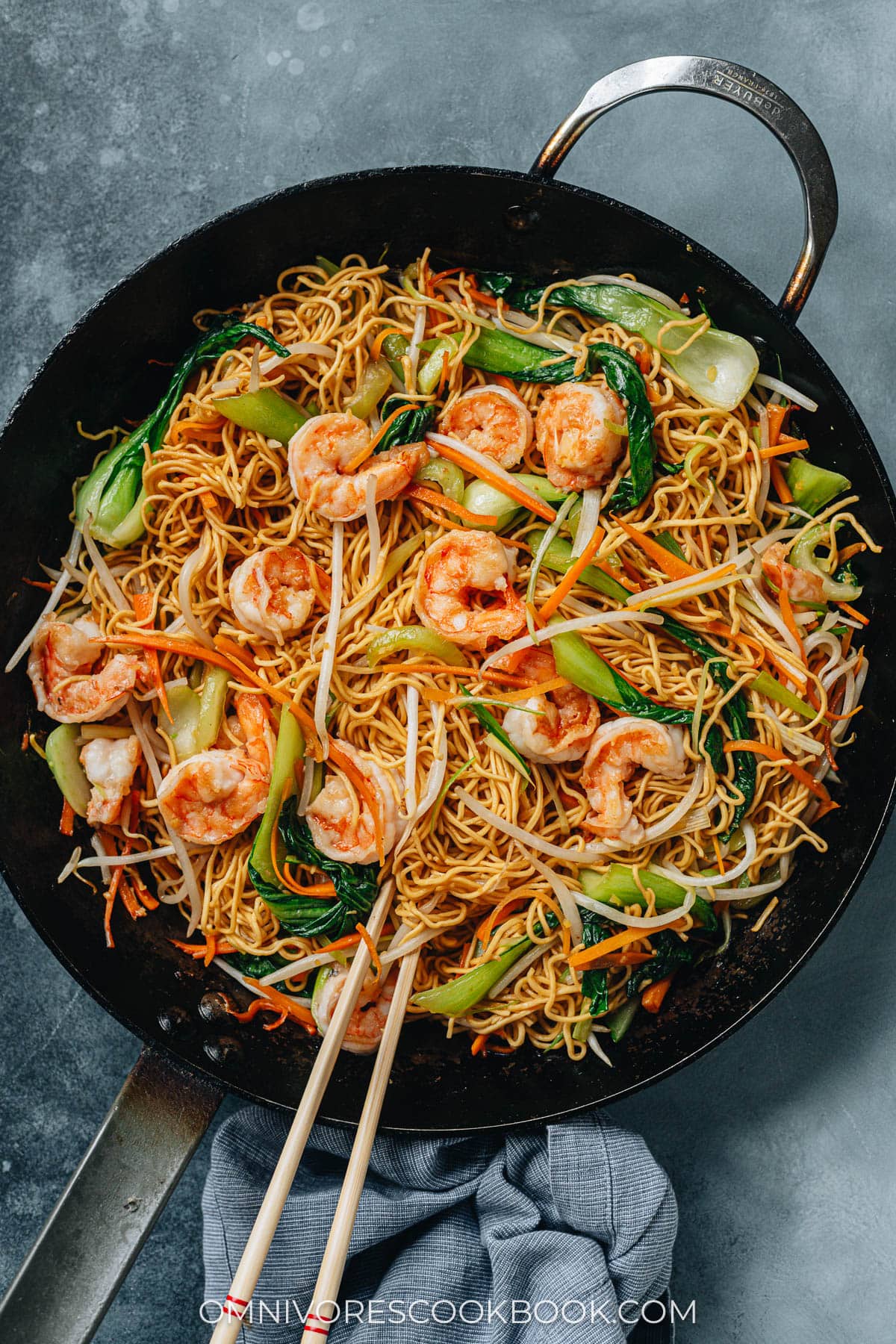
Fried noodles are great one-pan meals that are perfect for a weekday dinner. I’ve shared many noodle recipes in the past, such as beef chow mein, chicken chow mein, vegetable lo meinand Singapore noodles. The beauty of these dishes is, they turn a small amount of protein and your vegetable scraps into a comforting balanced meal that is super satisfying.
Why you’ll love this shrimp chow mein recipe
Shrimp chow mein is a fantastic choice when you’re looking for a meal that’s flavorful, satisfying and healthy. Here’s what makes this recipe a keeper:
- Quick and Easy: Done in less than 30 minutes!
- Customizable: Swap out carrot and bean sprouts with whatever veggies you have on hand.
- Money saver: Not only does it cost less to cook it at home, you can also load the dish with more shrimp than the restaurant does.
- Healthy and Satisfying: With a balance of protein, carbs, and vegetables, it’s a meal that’s sure to fill you up without weighing you down.
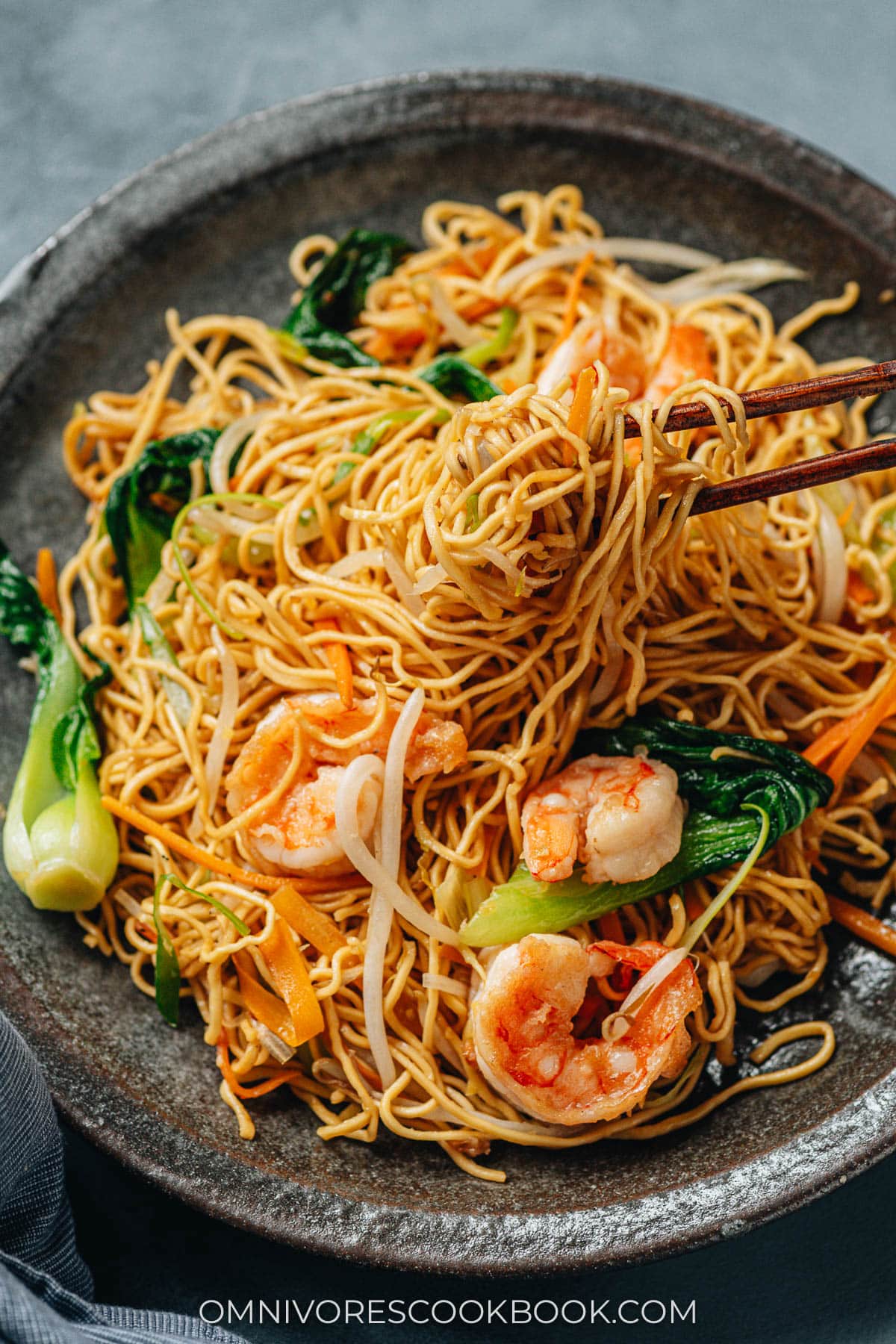
Shrimp chow mein ingredients
What type of noodles to use?
To get the best tasting shrimp chow mein, fresh chow mein and Hong Kong pan fried noodles are the best. The noodles are thin and have a yellow color.
If you live close to an Asian market, you can find these fresh noodles in either the refrigerated or freezer section. You can also find them at the online Asian grocery store Weee!. My favorite noodles are Hong Kong style pan fried noodles and Twin Marquis Yakisoba Noodles. The Hong Kong pan fried noodles are semi-fresh. You can soak them in boiling water for 1 minute and use them right away. The texture of the Twin Marquis yakisoba noodles is closer to Chinese chow mein than Japanese yakisoba. It’s fresh and you can use it directly without boiling it.
If the fresh type is not available, you can use dried chow mein noodles as well. Many regular grocery stores carry them these days (usually in the “ethnic” aisle). And you can even find them on Amazon.
Oyster sauce
Oyster Sauce, (蚝油, hao you) is one of the most frequently used ingredients in Cantonese dishes. And it is in many of your favorite takeout dishes. It is the magic ingredient to add umami to stir fry sauces such as brown sauce, and it will make your shrimp chow mein extra fragrant.
You can shop for oyster sauce at your local Asian market and onlinethough some regular supermarkets stock good oyster sauce these days, too.
As far as brands go, Lee Kum Kee invented oyster sauce and they’re still my default choice. Their premium oyster sauce has a rich flavor and is made without preservatives.
Another great oyster sauce is made by Megachef in Thailand. Their sauce is made from fresh oysters which are smoked before being made into sauce. The flavor of Megachef is the best of any oyster sauce I’ve tried, and they achieve this without using MSG.
Other vegetable alternatives
The vegetables in shrimp chow mein can be flexible, depending on what you’ve got in your fridge.
I used carrot, bean sprouts, and baby bok choy in this recipe. This combo offers a variety of colors and textures·.
Other vegetables such as yu choy, Chinese broccoli, cabbage, bell pepper, snow peas, onion, and napa cabbage work well too. Note, you need to consider how much time is needed to cook each vegetable and add them in order. Your goal will be to cook everything until just cooked through at the end.
Set up
When you’re ready to cook shrimp chow mein, all of your ingredients should be prepped and placed near your stove. You should have:
- Vegetables, washed, drained and sliced (bok choy, carrot, bean sprouts)
- Marinated shrimp
- Mixed sauce
- Chopped aromatics (ginger, green onion)
- Noodles

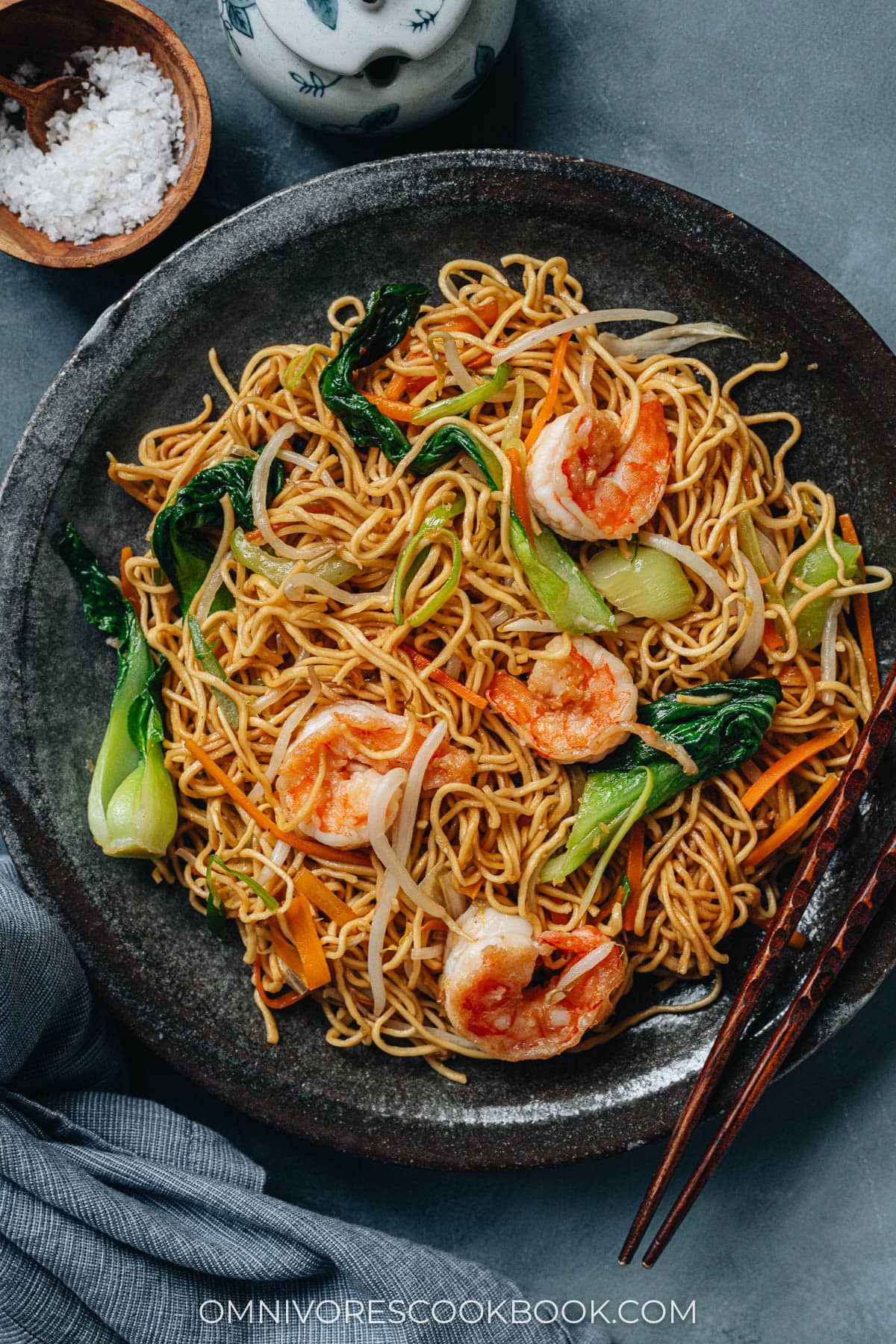
Do I need a wok for shrimp chow mein?
The short answer is no. You can use a large skillet (12” minimum) to create a very good tasting shrimp chow mein. You can read more on this topic in my post wok vs skillet. If you decide to use a wok, you should make sure that you have a powerful gas range so the wok heats up properly. A good nonstick skillet or a carbon steel pan is great for making chow mein. If using a carbon steel pan, you will need some cooking experience to make sure the ingredients cook properly without sticking.
How to make shrimp chow mein
Making shrimp chow mein is easy once you’ve done all the preparation.
First, you need to prepare the noodles according to the type you’re using.
For dried noodles, you need to boil them according to the package instructions until al dente. I used Hong Kong pan fried noodles in my recipe, so I only briefly soaked the noodles in boiling water prior to using. If using fresh noodlesyou only need to thaw them and fluff them with your hands before using.
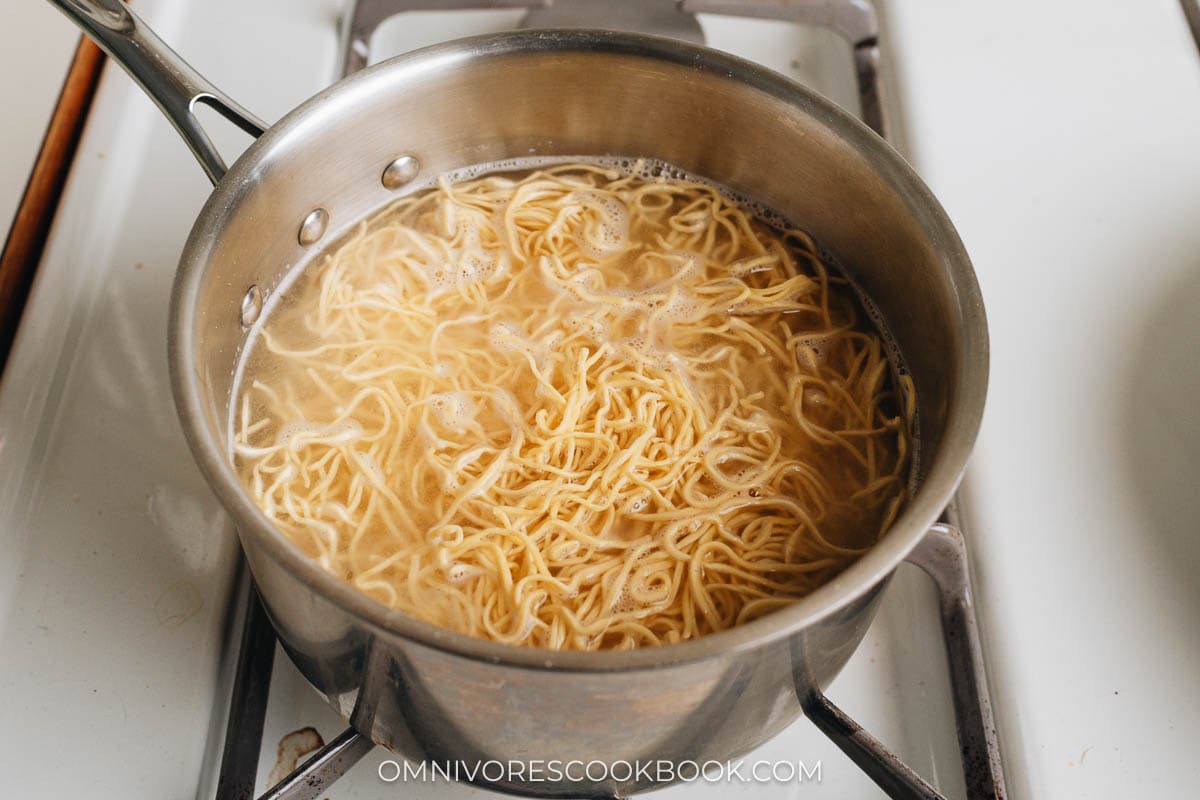
For the stir fry, first, pan fry the shrimp and move them to a plate. This is important so the shrimp stay juicy and tender without overcooking.
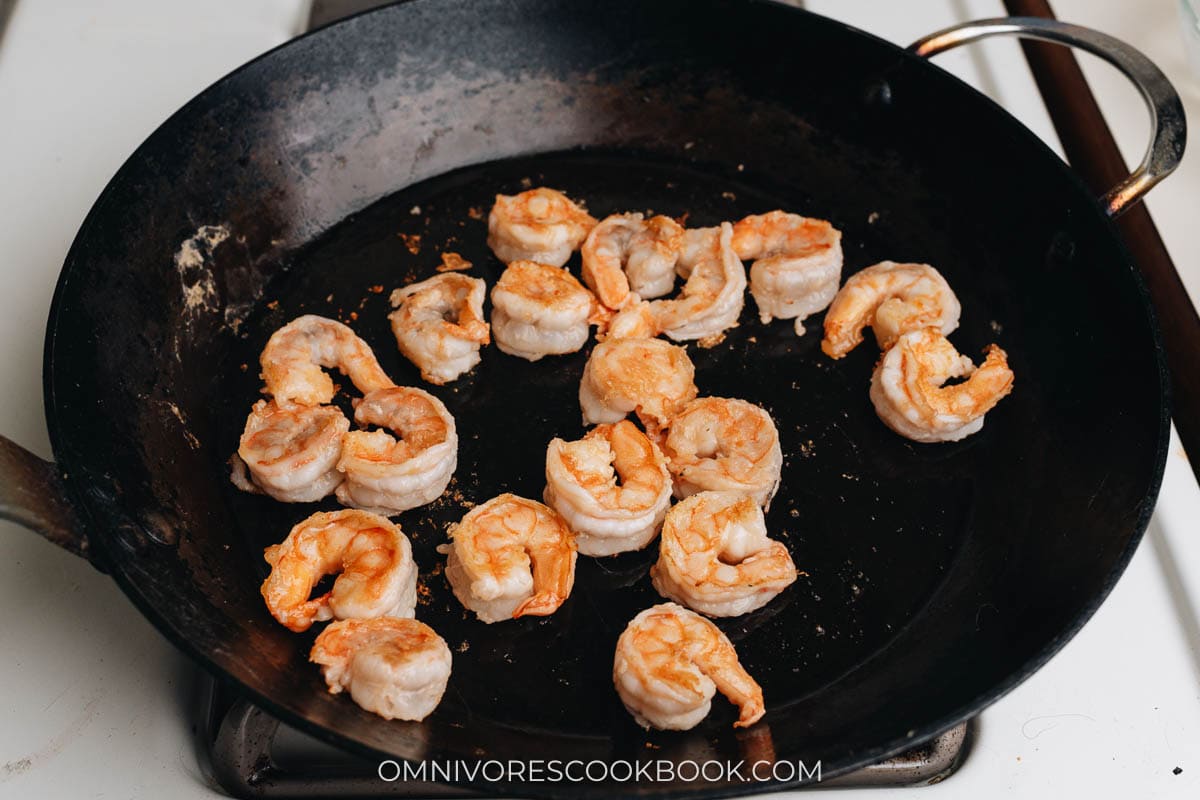
Then saute the aromatics to infuse the oil, and cook the harder vegetables until al dente. The veggies will cook more when you add the sauce, so you don’t want them to be too soft at this stage.
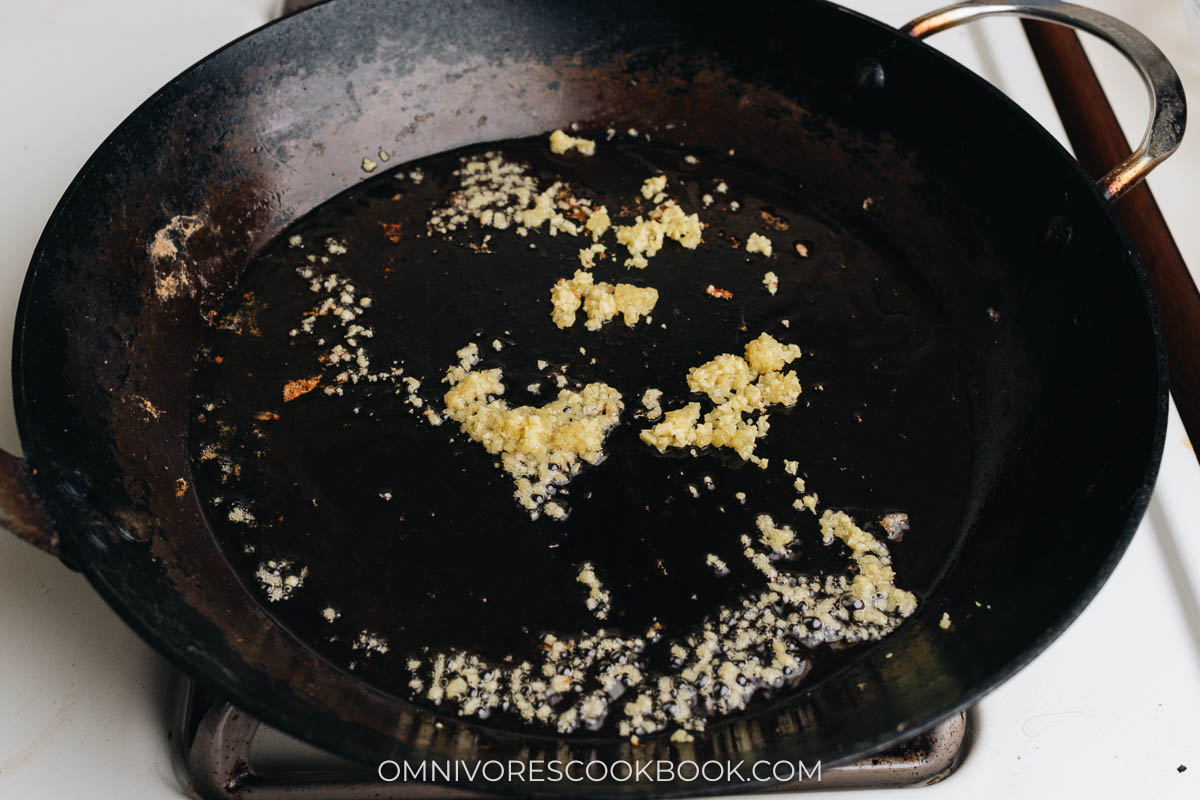
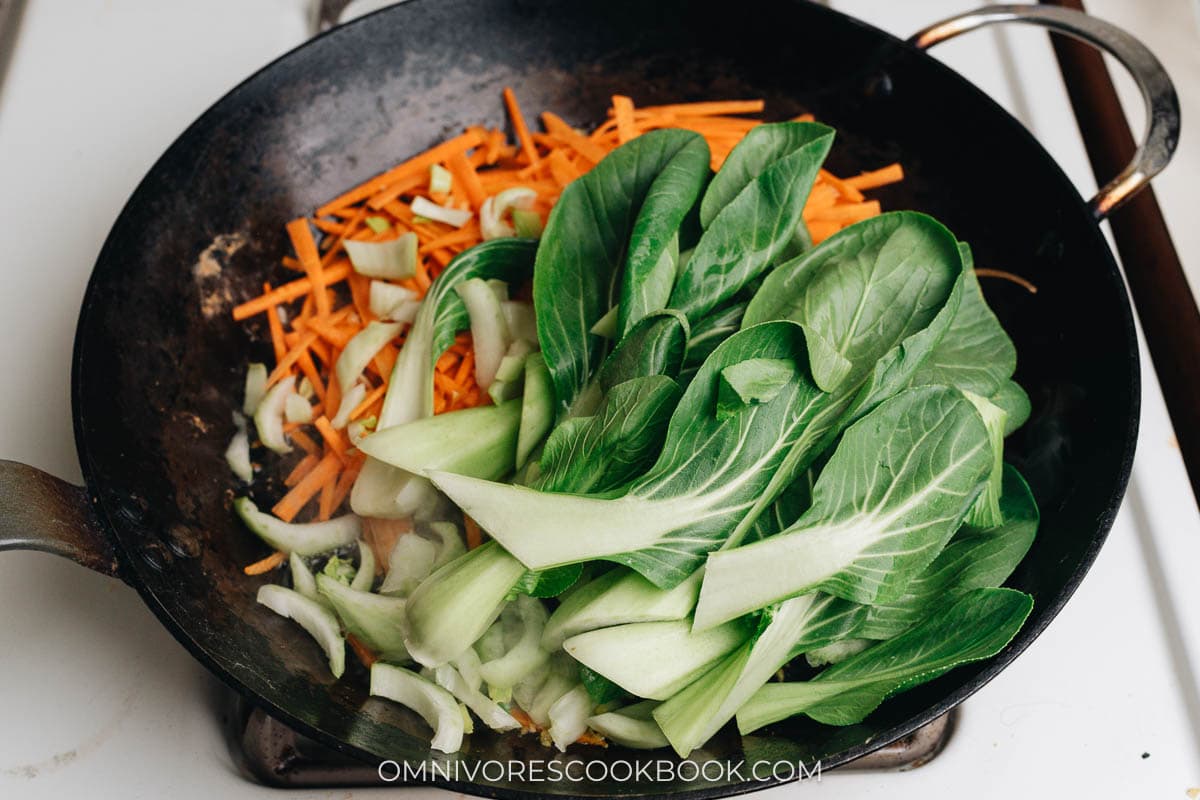
Toss the noodles with sauce, then toss with bean sprouts and green onion at the end.
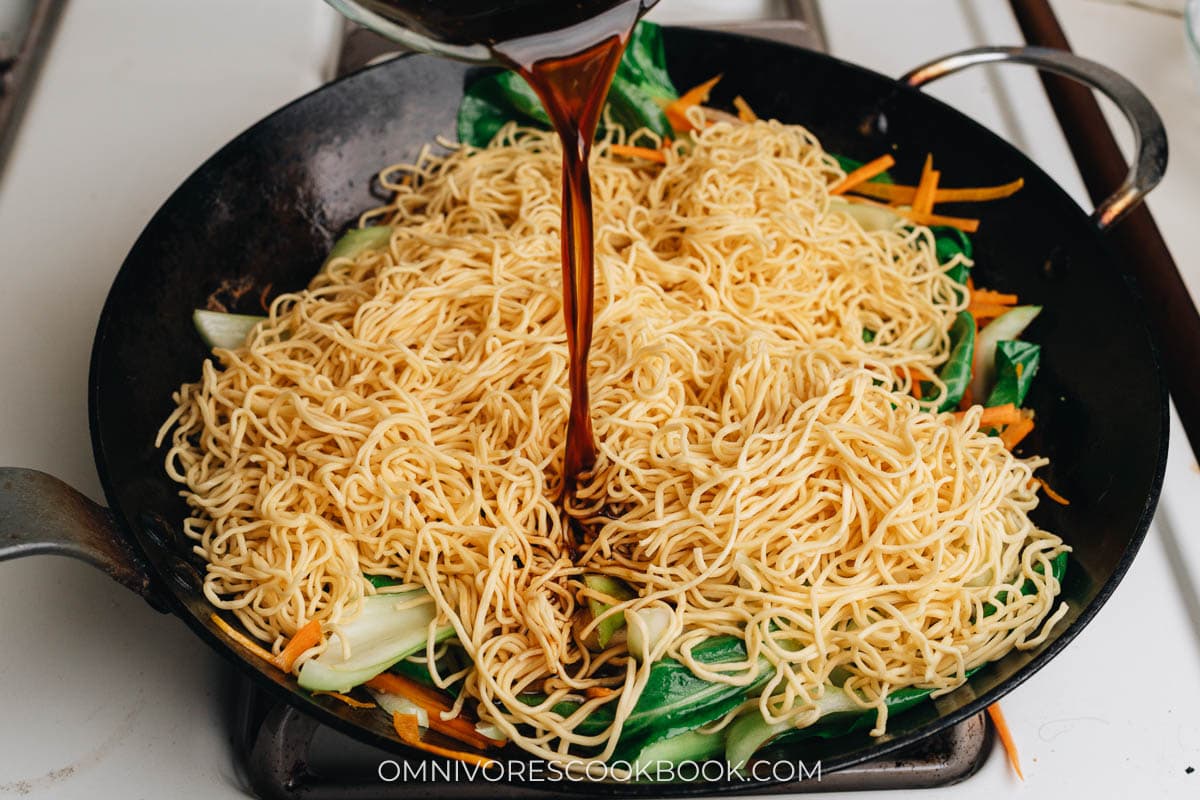
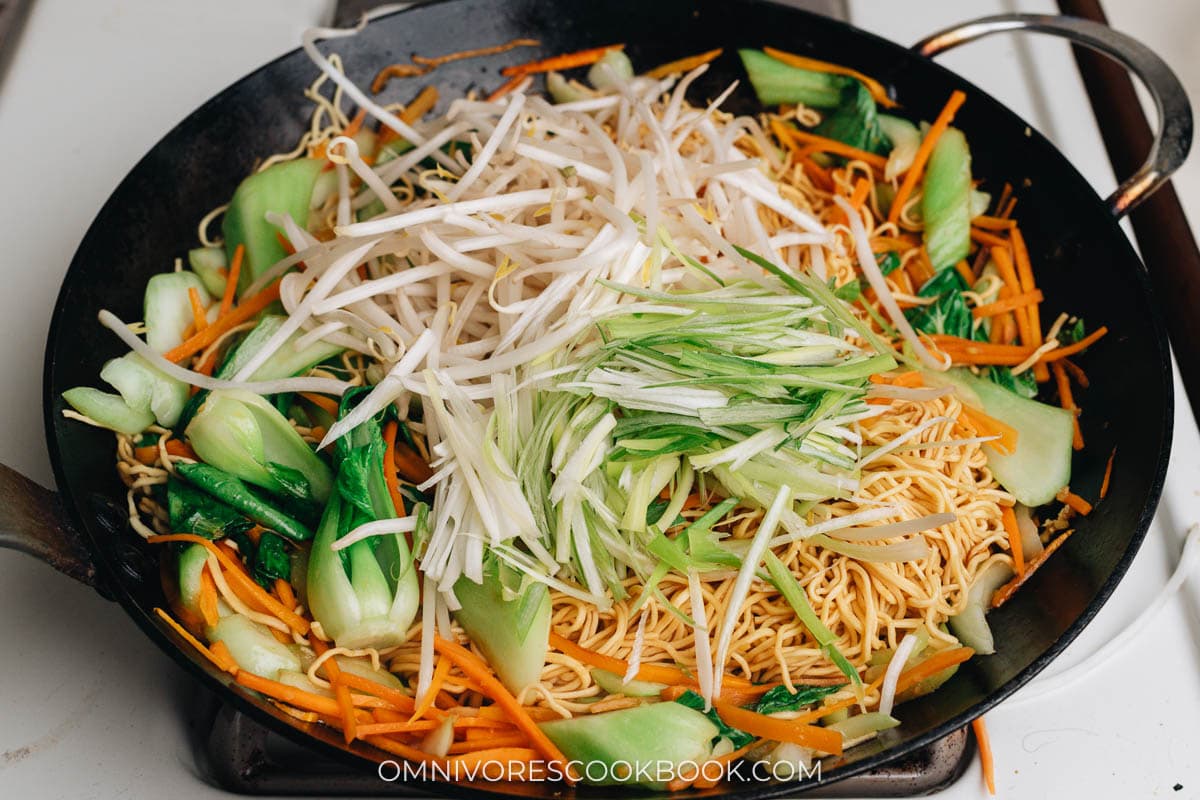
Once everything is almost done, add back the shrimp and mix everything together.
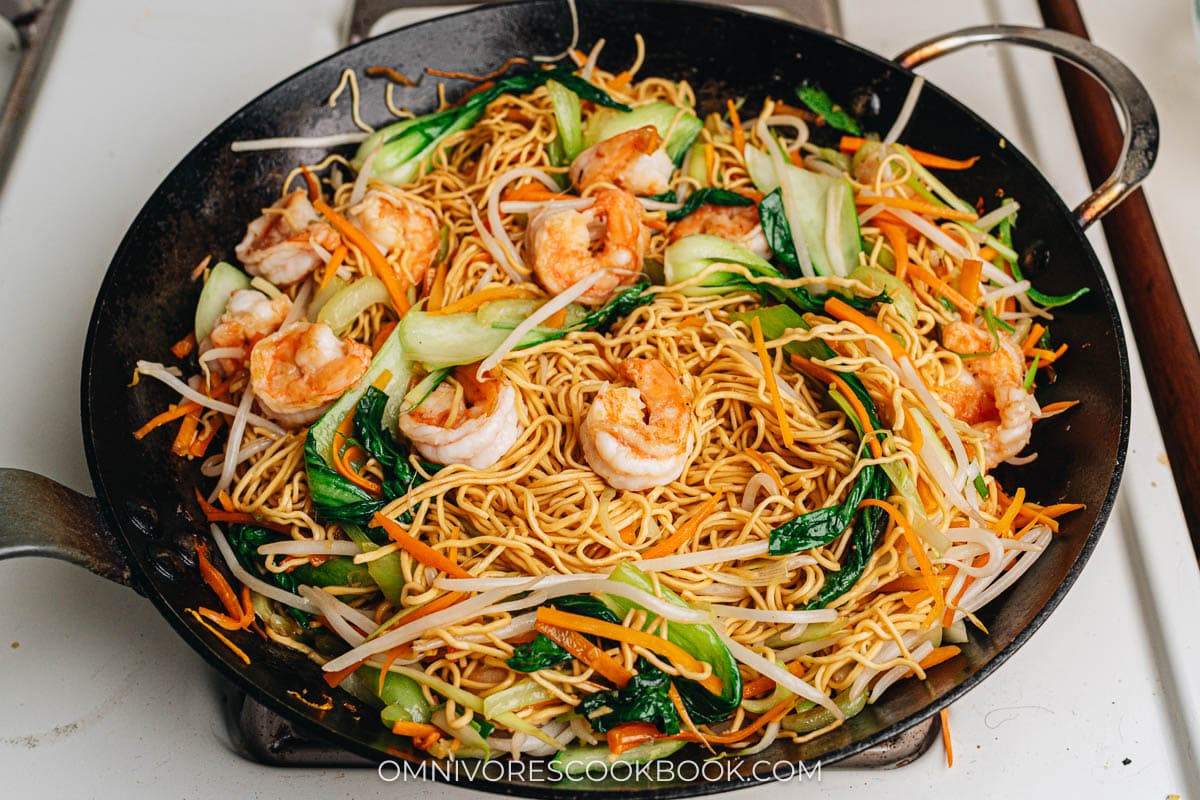
When finished, the vegetables should be crunchy and crisp, noodles chewy and flavorful, and the shrimp juicy and tender.
How to serve shrimp chow mein
You can serve shrimp chow mein as a standalone main dish for your meal. You can also serve it as one of the side dishes for a multi-course dinner. In this case, the dinner would usually consist of a soup, one or two main dishes featuring other proteins, and one or two vegetable dishes, side dishes and/or appetizers. For a full-on Chinese dinner, serve shrimp chow mein with:
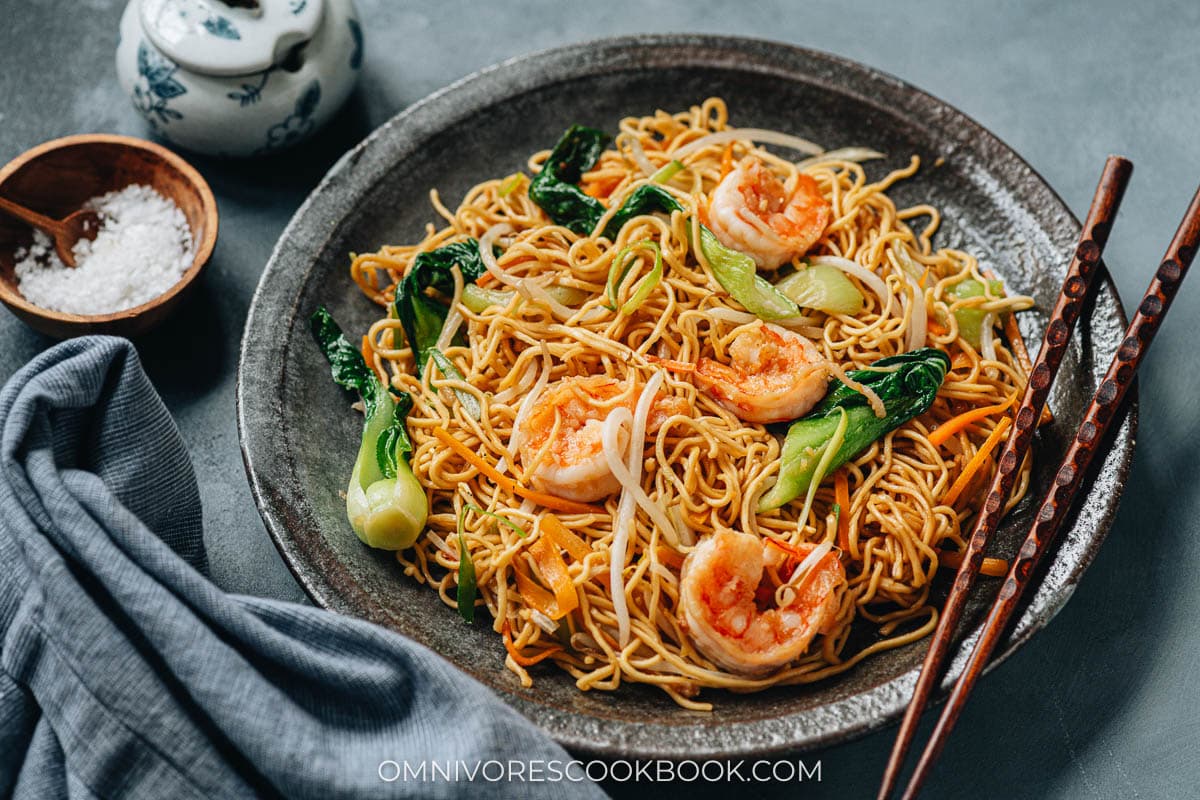
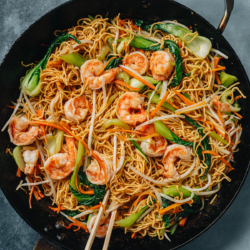
Shrimp Chow Mein (fresh shrimp fried noodles)
Craving some delicious shrimp chow mein but don’t want to order takeout? This recipe is perfect for a quick, homemade alternative that tastes just as good (if not better) than the restaurant version! It’s loaded with juicy shrimp, crisp veggies, and chewy noodles tossed in a savory sauce that’s easy to whip up in under 30 minutes.
Ingredients
Marinating
- 8 oz (16 to 20 medium size) shrimp peeled and deveined
- 2 teaspoons Shaoxing wine (or dry sherry)
- 2 teaspoons cornstarch
- 1/8 teaspoon salt
Stir fry
- 2 tablespoons peanut oil (or vegetable oil)
- 1 tablespoon minced ginger
- 8 oz (225 g) fresh Hong Kong Pan Fried Noodles (or 6 oz / 170 g dried chow mein noodles)
- 1 medium carrot julienned (4 oz / 100 g)
- 3 heads baby bok choy sliced into large bite-size pieces (7 oz / 200 g)
- 2 cups (4 oz / 100 g) bean sprouts
- 2 green onions sliced into 2” (5 cm) pieces
Instructions
-
Prepare the noodles: Boil the noodles according to package instructions until al dente. Rinse with tap water to stop cooking, drain thoroughly and set aside.
-
Mix the sauce: Whisk all the ingredients for the sauce in a bowl.
-
Cook the stir fry: Heat 1/2 tablespoon of oil in a large skillet or wok over medium-high heat until hot. Add the shrimp. Cook undisturbed until the bottom turns golden brown, 1 to 2 minutes. Turn to cook the other side, until the shrimp curl up and the color changes throughout. Transfer all the shrimp to a plate and set aside.
-
Add 1 tablespoon of oil and the ginger. Stir a few times to release the fragrance. Add the carrot and bok choy. Cook and stir for 1 minute or so, until the veggies just start to wilt but are still crisp.
-
Add the noodles and drizzle the remaining 1/2 tablespoon oil over the noodles. Toss a few times with a pair of tongs. Pour the sauce over them. Toss to mix everything together.
-
Add the bean sprouts and the green onion. Toss for another 1 to 2 minutes. Add back the cooked shrimp. Toss well until the sauce is absorbed. Transfer everything to serving plates and serve hot as a main dish.
Nutrition
Serving: 1serving, Calories: 439kcal, Carbohydrates: 53.3g, Protein: 27.1g, Fat: 14.1g, Saturated Fat: 2.6g, Cholesterol: 181mg, Sodium: 607mg, Potassium: 567mg, Fiber: 3.2g, Sugar: 4.3g, Calcium: 160mg, Iron: 3mg

